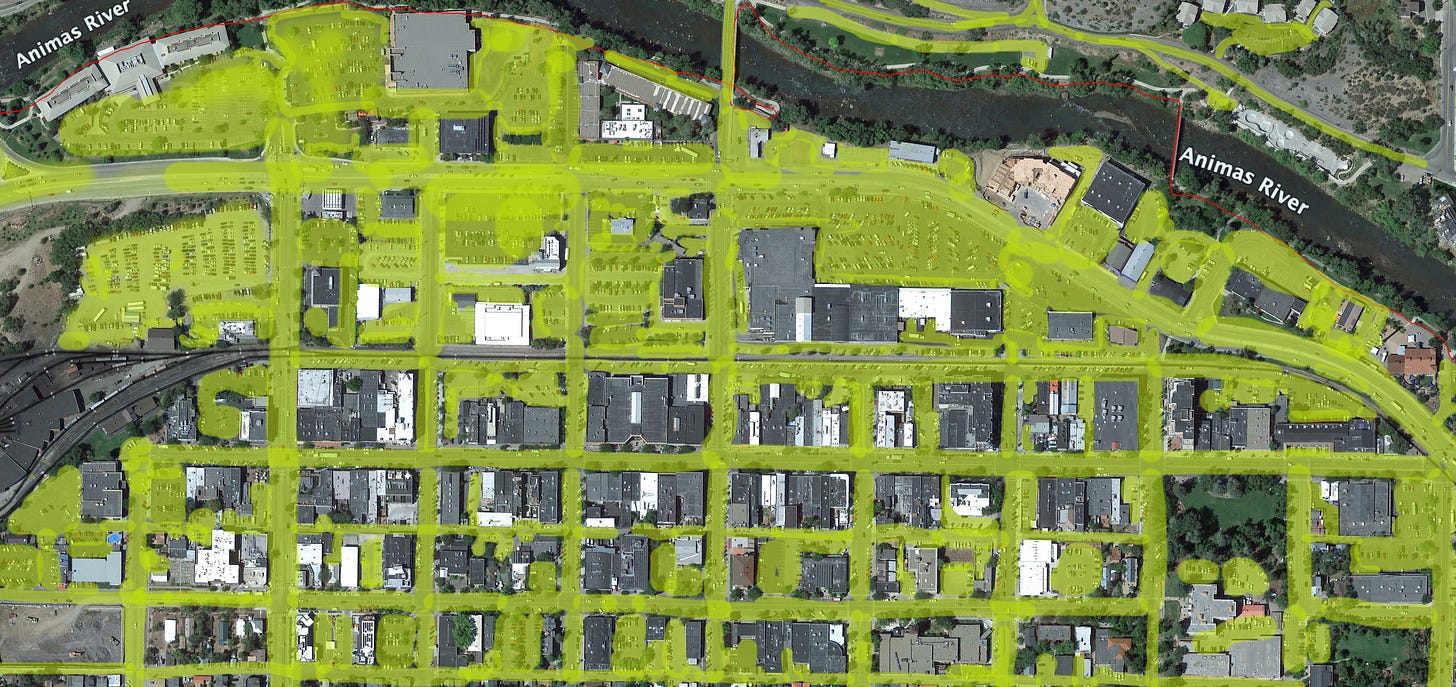Shaping an urban area in the rural West: Part III
Looking into the future, with a focus on mobility
This is the third installment in a series looking back at a 1971 comprehensive plan—and ahead at what changes might be in store—for the southwestern Colorado community of Durango. Although Durango-focused, much of the issues facing Durango 50 years ago are relevant to other Western communities. Read Part I here and Part II.
The above photo shows downtow…



